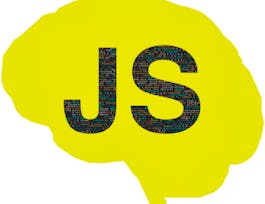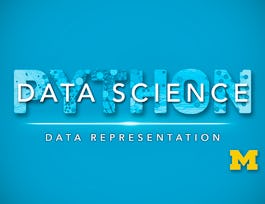This course aims to empower you to do statistical tests, ready for incorporation into your dissertations, research papers, and presentations. The ability to summarize data, create plots and charts, and to do the statistical tests that you commonly see in the literature is a powerful skill indeed.



Doing Clinical Research: Biostatistics with the Wolfram Language

Instructor: Juan H Klopper
Sponsored by Mojatu Foundation
7,283 already enrolled
(49 reviews)
What you'll learn
Learn to use the Wolfram Language.
Start to summarize data, create plots and charts, and do statistical tests.
Details to know

Add to your LinkedIn profile
6 assignments
See how employees at top companies are mastering in-demand skills


Earn a career certificate
Add this credential to your LinkedIn profile, resume, or CV
Share it on social media and in your performance review

There are 4 modules in this course
This first week establishes the aims of the course and motivation for using the Wolfram Language. We aim to support you in gaining a remarkable new set of skills for doing statistical analysis that you can continue to use long after you complete the course. We will also describe the process of procuring the software that you will use in the course. The first is the absolutely free version, which is software as a service, meaning it runs in any web browser. The second is the desktop version. If you work or study at an institution with a site licence, you will be able to get the software for free. There is also the option to purchase your own licence.
What's included
14 videos8 readings2 discussion prompts
In week 2, we start with some actual coding, now that you know about the Wolfram Language and its different coding environments. We start off with a demonstration of a completed project. It is just a little teaser, showcasing what you will be able to do at the end. Next, we are going to learn to code by doing simple arithmetic. That is simple addition, subtraction, multiplication, and so on. Once you have realized just how simple these tasks are, you will be introduced to the way in which data is stored in a computer language. These are the stepping stone required to bringing in your own data, ready for the analyses in the following weeks.
What's included
20 videos8 readings1 assignment
In week 3, its time to start analyzing data, now that you can write some code and import your data. The two most important steps to understand the message hidden in data, are to summarize and visualize it. Descriptive statistics turn rows and columns of data into something that we as humans can understand. By summarizing values and replacing them with single values, we start to get an idea of what our analyses might show. Visualizing the data is an even better way of getting to grips with data. Box-and-whisker plots, scatter plots, bar charts, and the like are wonderful ways to augment your understanding of the data. The Wolfram Language makes summary statistics easy but it really shines when creating plots. There are almost no limits to customizing plots. No matter what your project requirements, you will learn to create plots that work for you. Starting this week is an optional Honors lessons that introduce machine learning using the Wolfram Language.
What's included
27 videos10 readings2 assignments
This final week covers all the common statistical tests - going from Student's t-test to analysis of variance to chi-squared tests. We conclude the course with a run-through of the demonstration research project that you saw at the beginning of week two. This brings together all the skills that you have acquired during the course and prepares you for the final exam. You will also have the opportunity to create your own computational essay, if you are not content with just working through the demonstration project. For those following the optional Honors lessons there is an introduction to deep learning using the Wolfram Language.
What's included
27 videos13 readings3 assignments1 discussion prompt
Instructor

Offered by
Why people choose Coursera for their career




Learner reviews
49 reviews
- 5 stars
75.51%
- 4 stars
16.32%
- 3 stars
6.12%
- 2 stars
2.04%
- 1 star
0%
Showing 3 of 49
Reviewed on Mar 21, 2021
The course was great, I enjoyed learning on this platform.
Reviewed on Sep 17, 2020
This is a Fantastic Course. Those interested to learn Bio statistics with Wolfram should definitely go for this one.
Reviewed on Jul 24, 2020
Learn lot of things about Mathematica language. Thank you very much
Recommended if you're interested in Data Science

Johns Hopkins University

University of Glasgow

University of Michigan

Open new doors with Coursera Plus
Unlimited access to 10,000+ world-class courses, hands-on projects, and job-ready certificate programs - all included in your subscription
Advance your career with an online degree
Earn a degree from world-class universities - 100% online
Join over 3,400 global companies that choose Coursera for Business
Upskill your employees to excel in the digital economy



